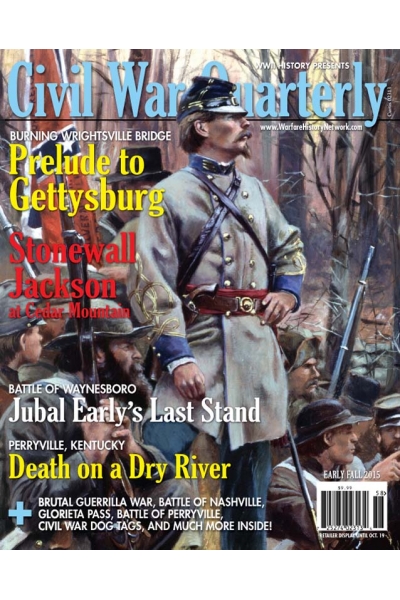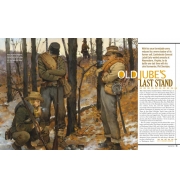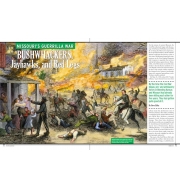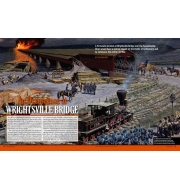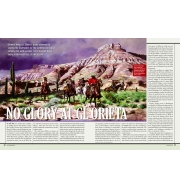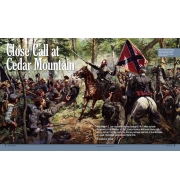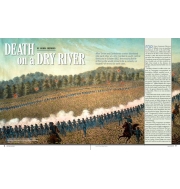Civil War Quarterly - Early Fall 2015 (Soft Cover)
Death on a Dry River
After Union and Confederate armies blundered into each other at a dry riverbed in south-central Kentucky in October 1862, the ensuing Battle of Perryville would prove to be a comedy—or tragedy—of errors on both sides. By Joshua Shepherd
Forty-rod, Blue Ruin, and Oh Be Joyful: Alcohol Abuse in the Civil War
With a plethora of colorful nicknames, alcohol was widely abused in both Union and Confederate armies during the Civil War by soldiers desperate to escape the terrors of battle and the boredom of camp. By David A. Norris
Close Call at Cedar Mountain
With Robert E. Lee counterattacking George B. McClellan outside Richmond in the summer of 1862, Union General Nathaniel Banks set out to distract Lee by capturing the key railroad junction at Gordonsville. As usual, Stonewall Jackson got there first. By William E. Welsh
No Glory at Glorieta
General Henry H. Sibley’s grand strategy for seizing the Southwest for the Confederate cause initially met with success, but it bogged down badly at Glorieta Pass. By Chuck Lyons
An Occurrence at Wrightsville Bridge
A 15-minute skirmish at Wrightsville Bridge over the Susquehanna River would have a lasting impact on the Battle of Gettysburg and, by extension, the entire Civil War. By Don Hollway
Blood on the Snow
As the exhausted Confederate survivors of the Battle of Franklin shivered in their thinly held lines outside Nashville, Union General George H. Thomas prepared to launch a devastating, if much delayed, frontal assault. By John Walker
Bushwhackers, Jayhawks, and Red Legs: Missouri’s Guerrilla War
By the time the Civil War began, pro- and antislavery forces in Bleeding Kansas and Missouri had already begun killing each other for five years. They had gotten quite good at it. By Steve Lilley
Old Jube’s Last Stand
With his once formidable army reduced to a mere shadow of its former self, Confererate General Jubal Early waited uneasily at Waynesboro, Virginia, to do battle one last time with his chief tormenter, Phil Sheridan. By Cowan Brew
Editorial
Even the best spies sometimes get caught, as crack Union double agent Timothy Webster would learn the hard way in 1862. By Roy Morris Jr.
Espionage
In 1864, Confederate leaders gave the okay to set up a major spy ring in Canada. Agents immediately began plotting to spread terror in the Union. By Peter Kross
Militaria
Personal identification badges were worn by soldiers in the Civil War to avoid the dreaded “nameless grave.”
Your Review: Note: HTML is not translated!
Rating: Bad Good
Enter the code in the box below:

 Bestsellers
Bestsellers









 Our Featured
Our Featured